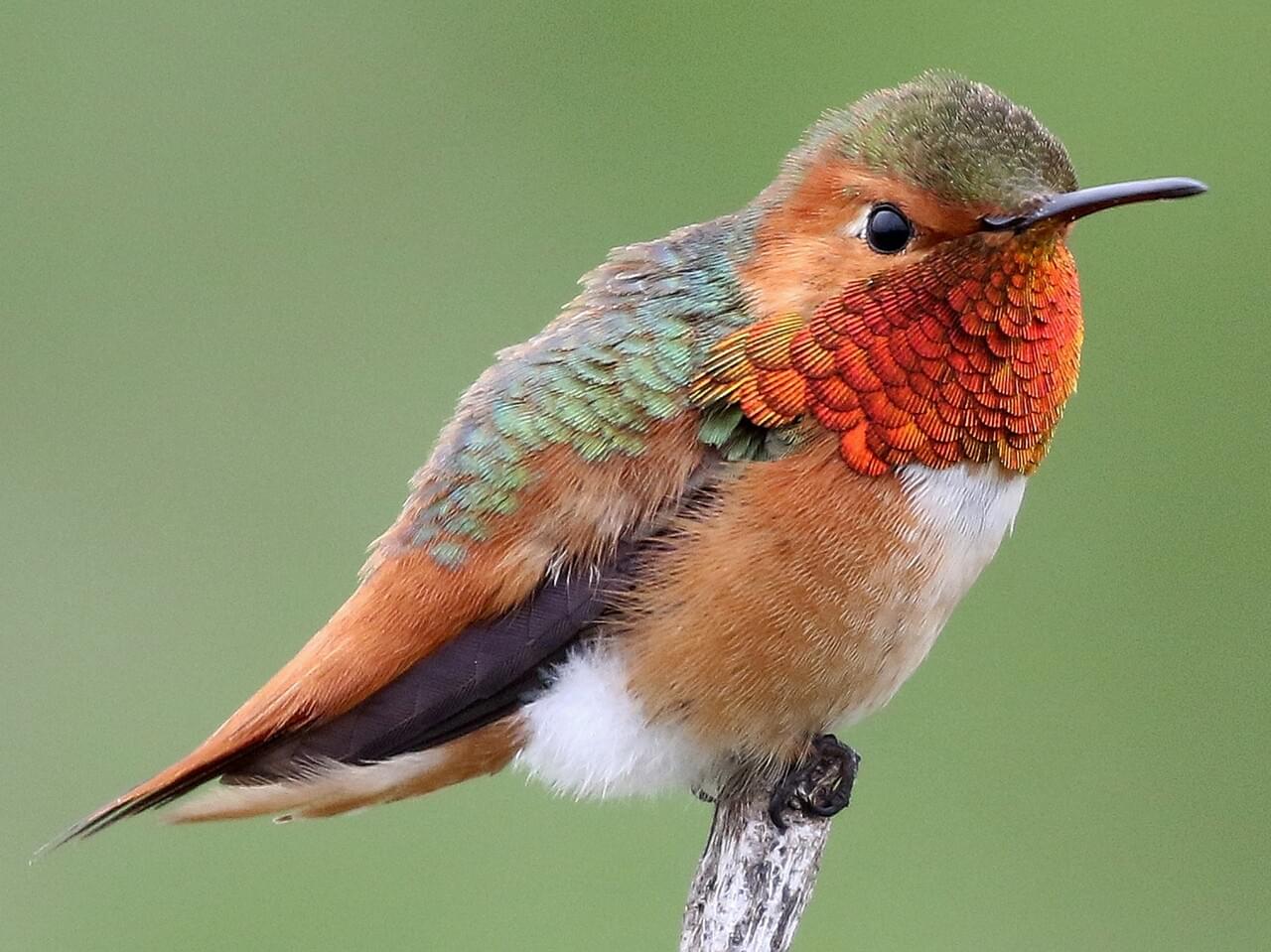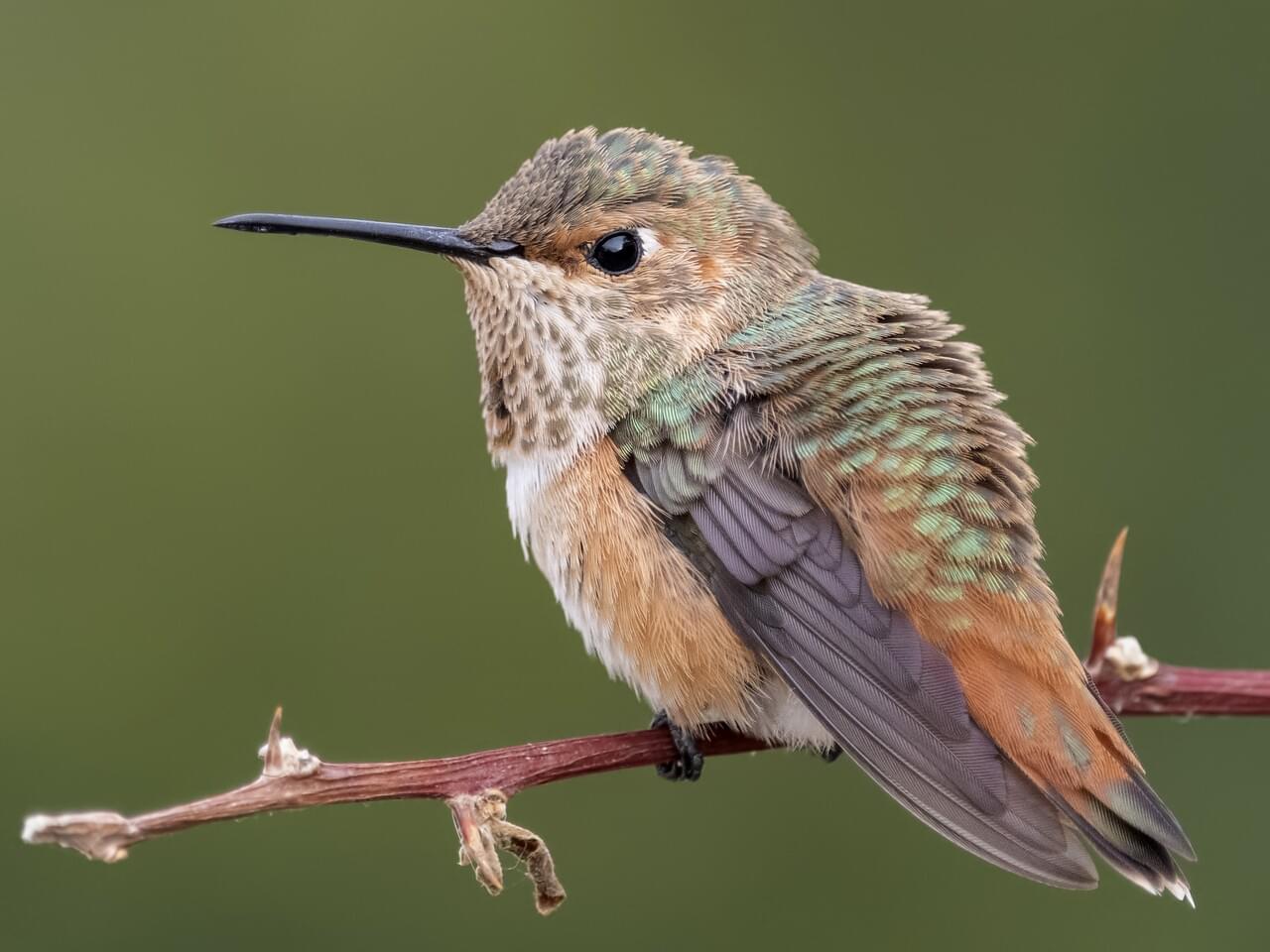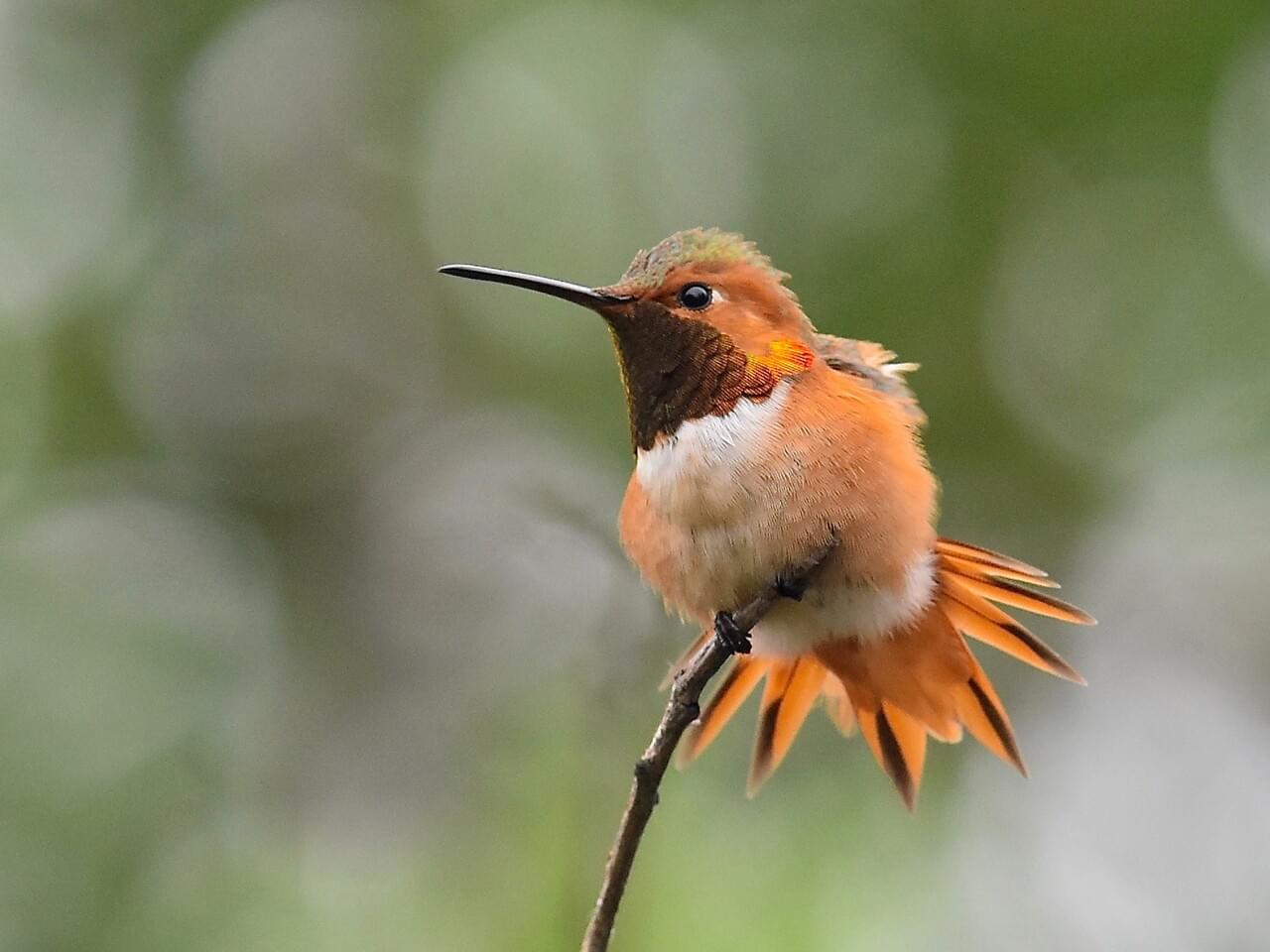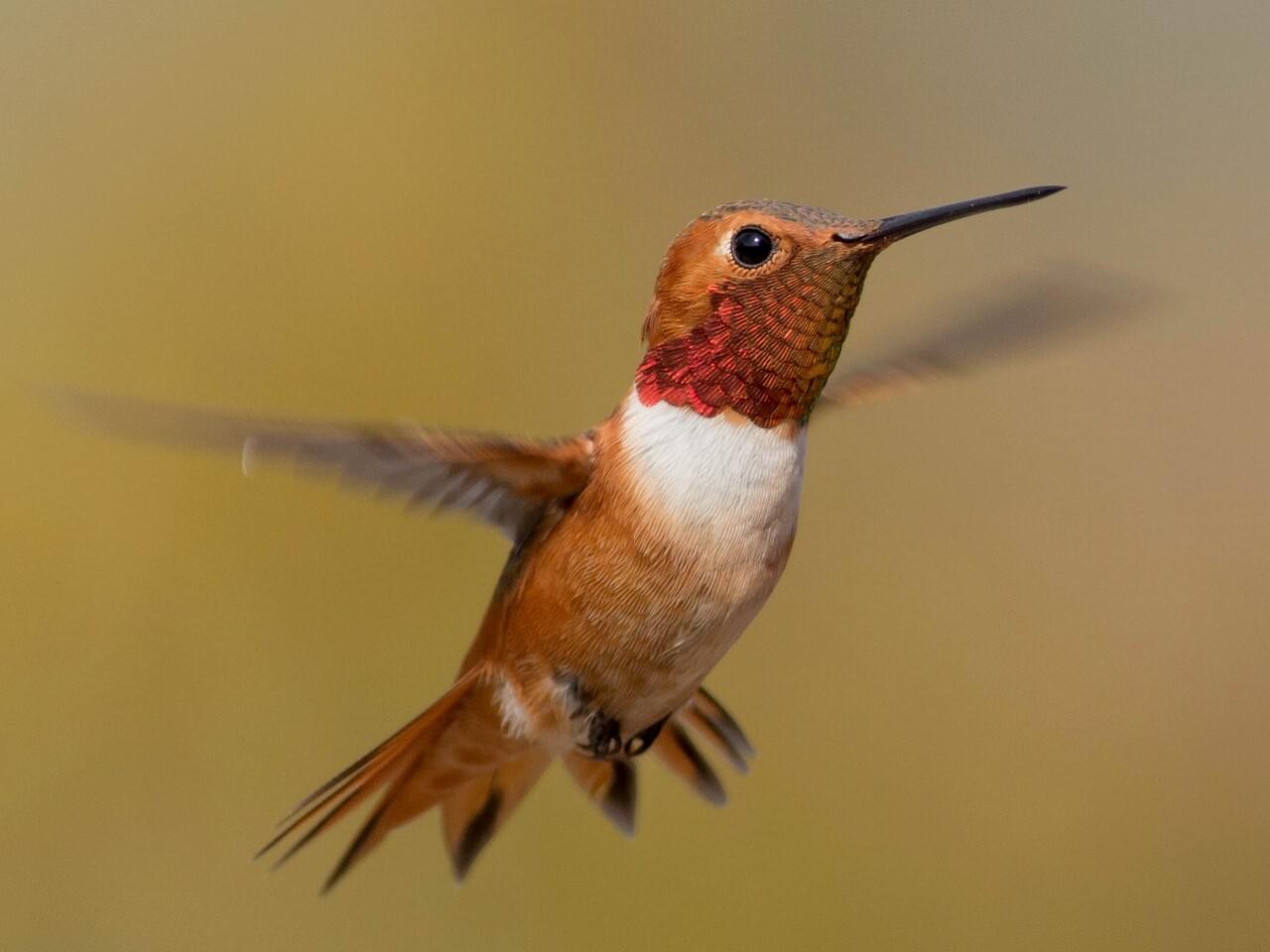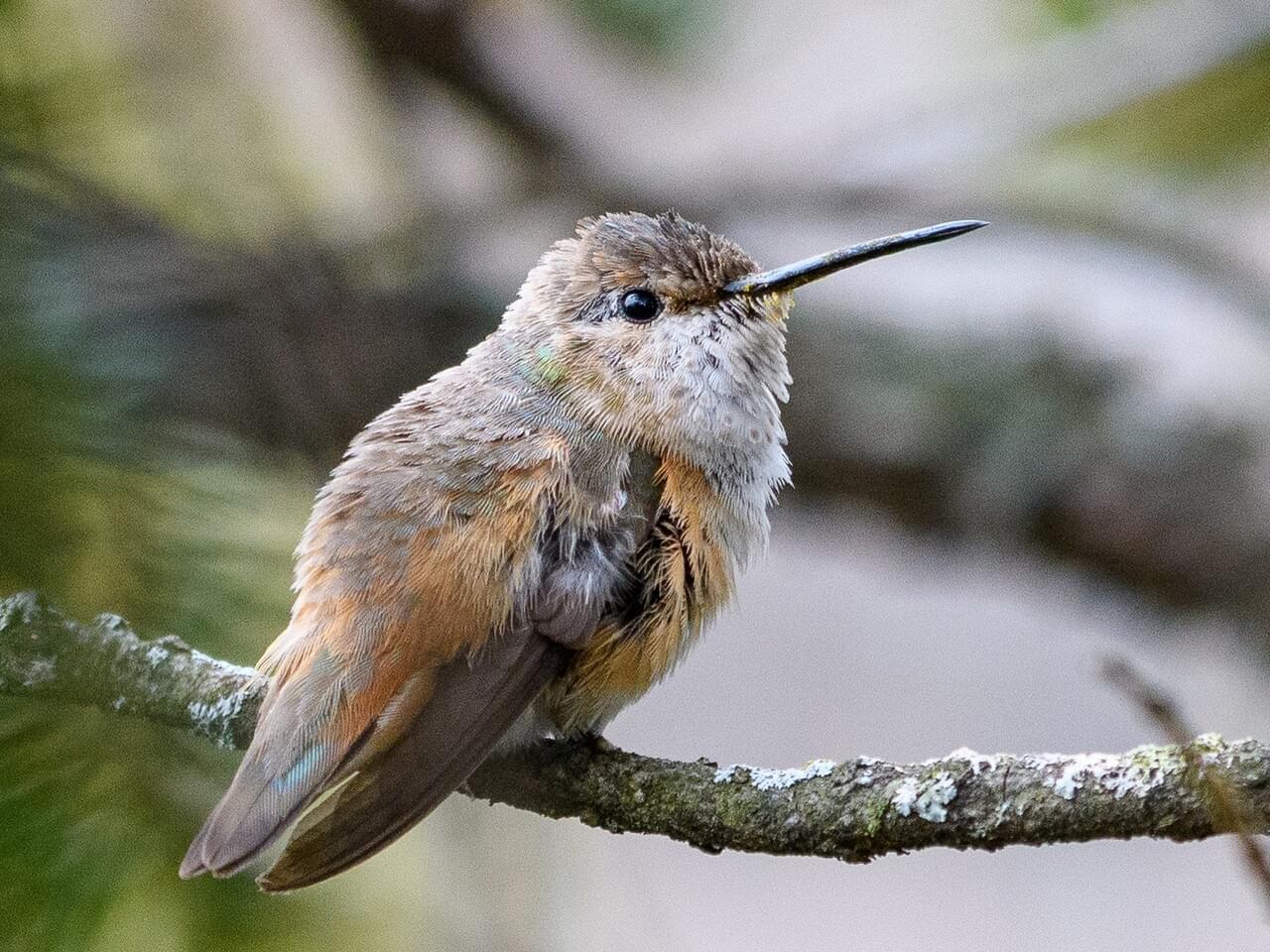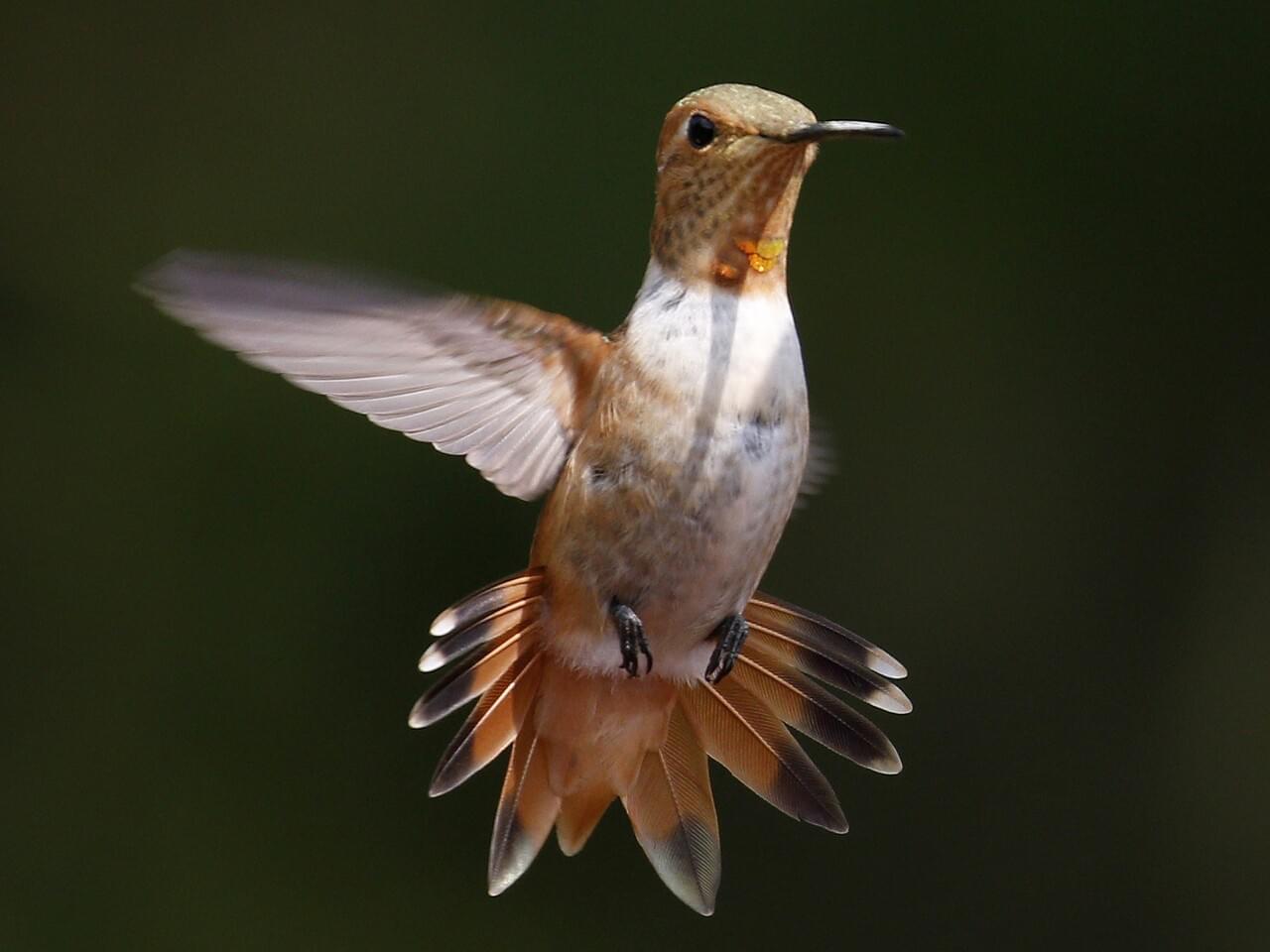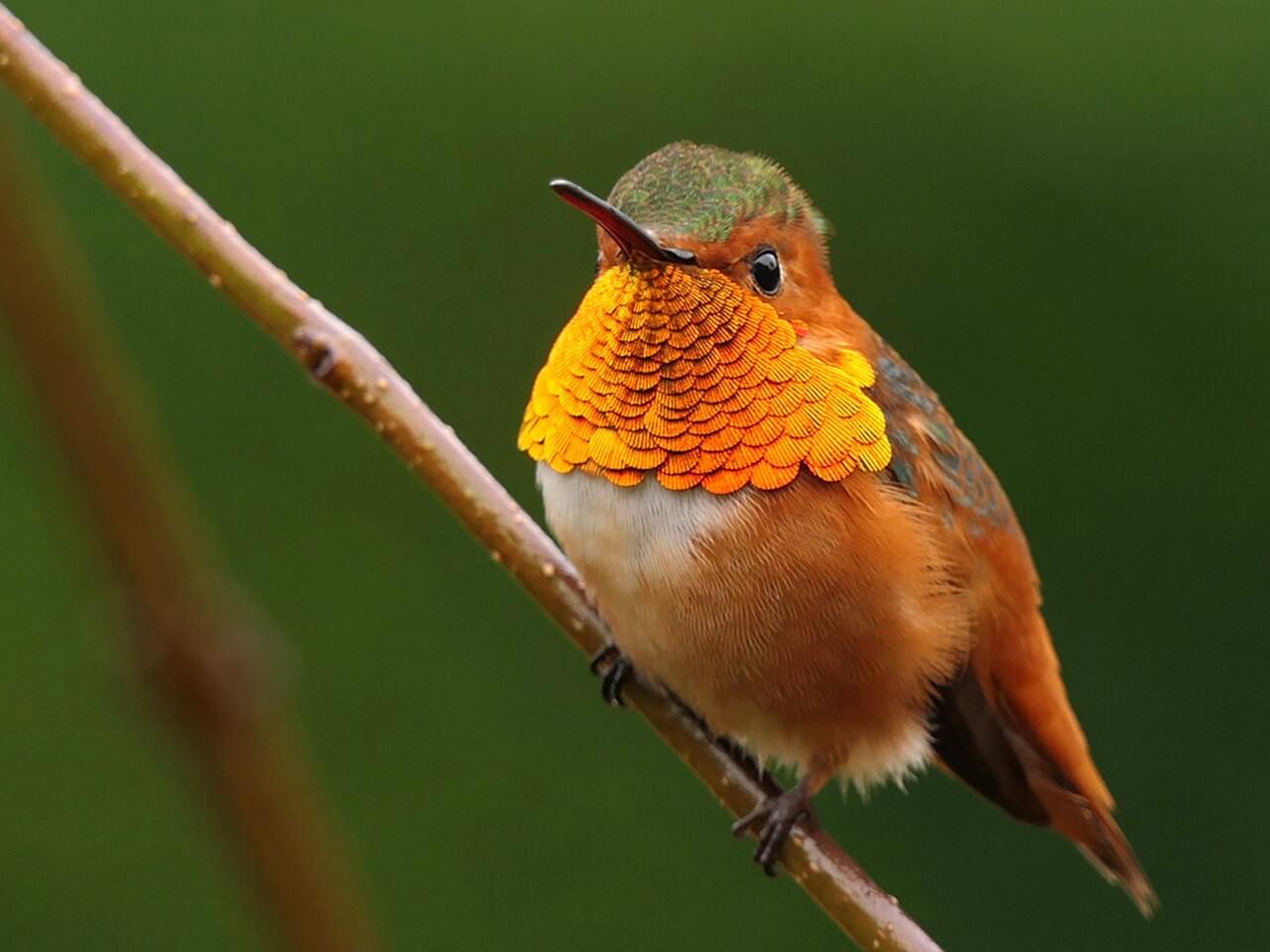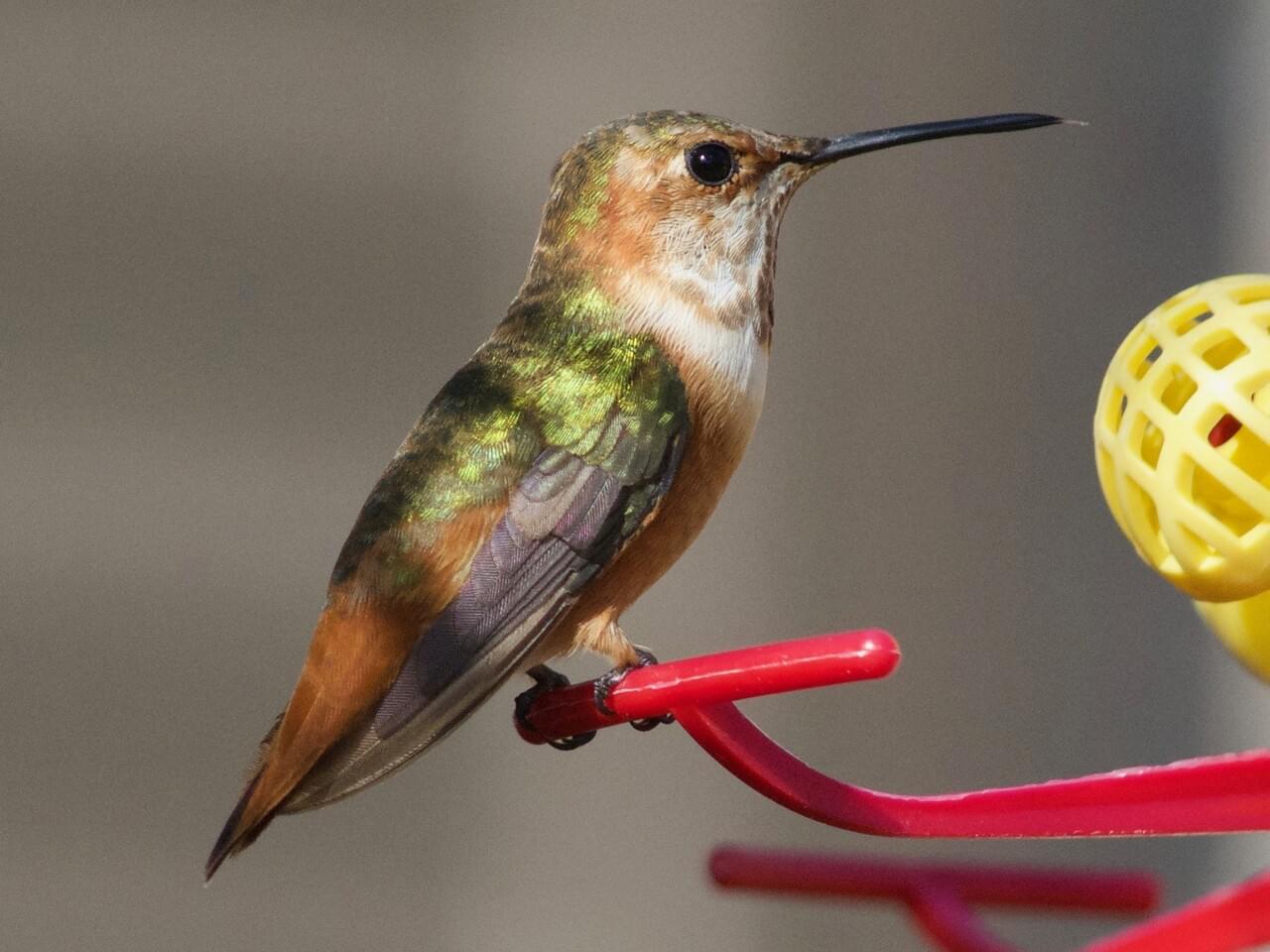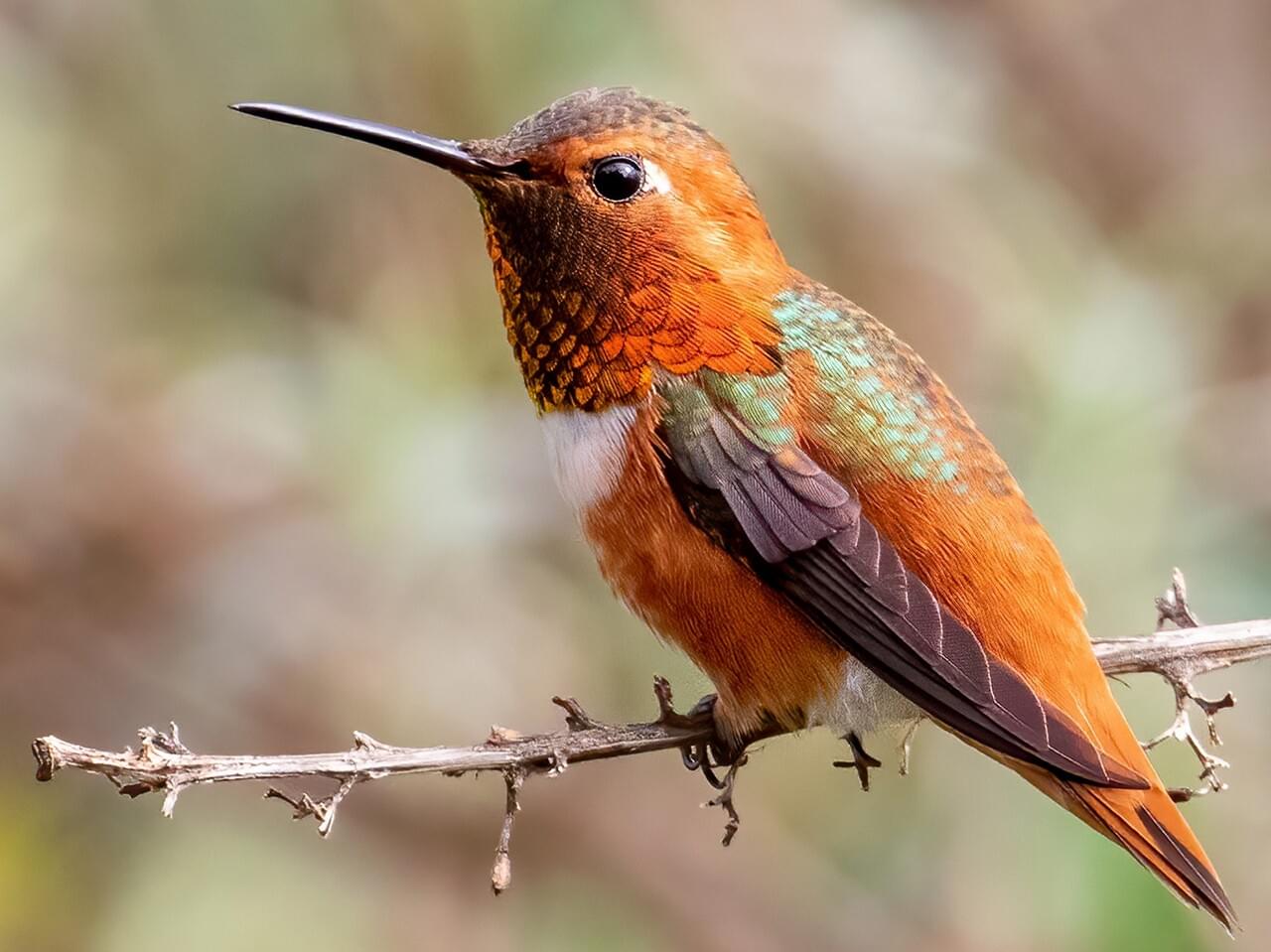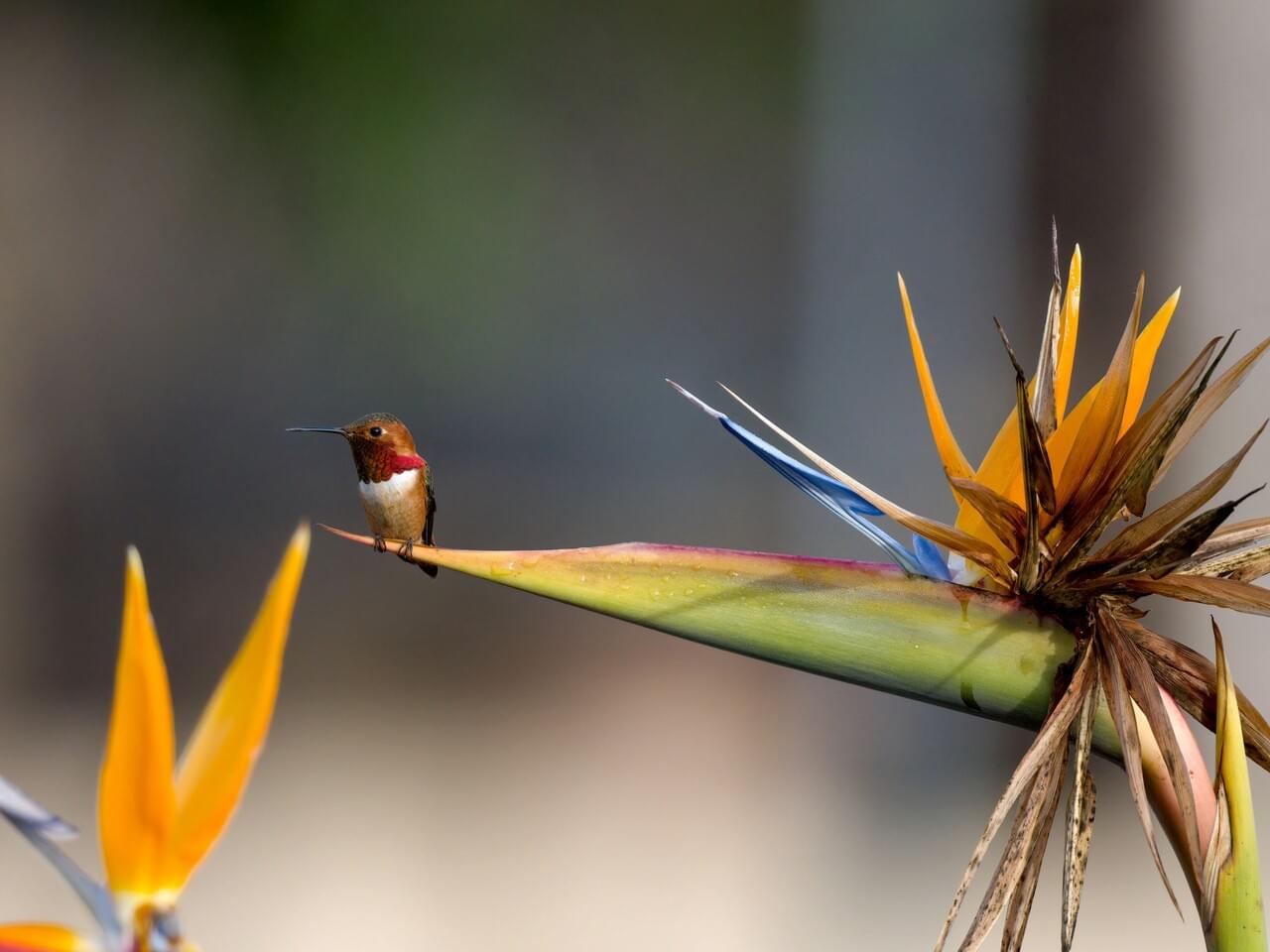 Photo ©
Liz Clayton Fuller
Photo ©
Liz Clayton Fuller
Allen’s Hummingbird
In early spring, a narrow strip of scrub and chaparral along the Pacific Coast starts buzzing with the sights and sounds of the coppery and green Allen's Hummingbird. Males flash their brilliant reddish orange throat and put on an elaborate show for the females, swinging in pendulous arcs before climbing high into the sky and diving back down with a sharp squeal made by their tails. These early migrants mostly spend the winter in Mexico, but some stay in southern California year-round.
Range
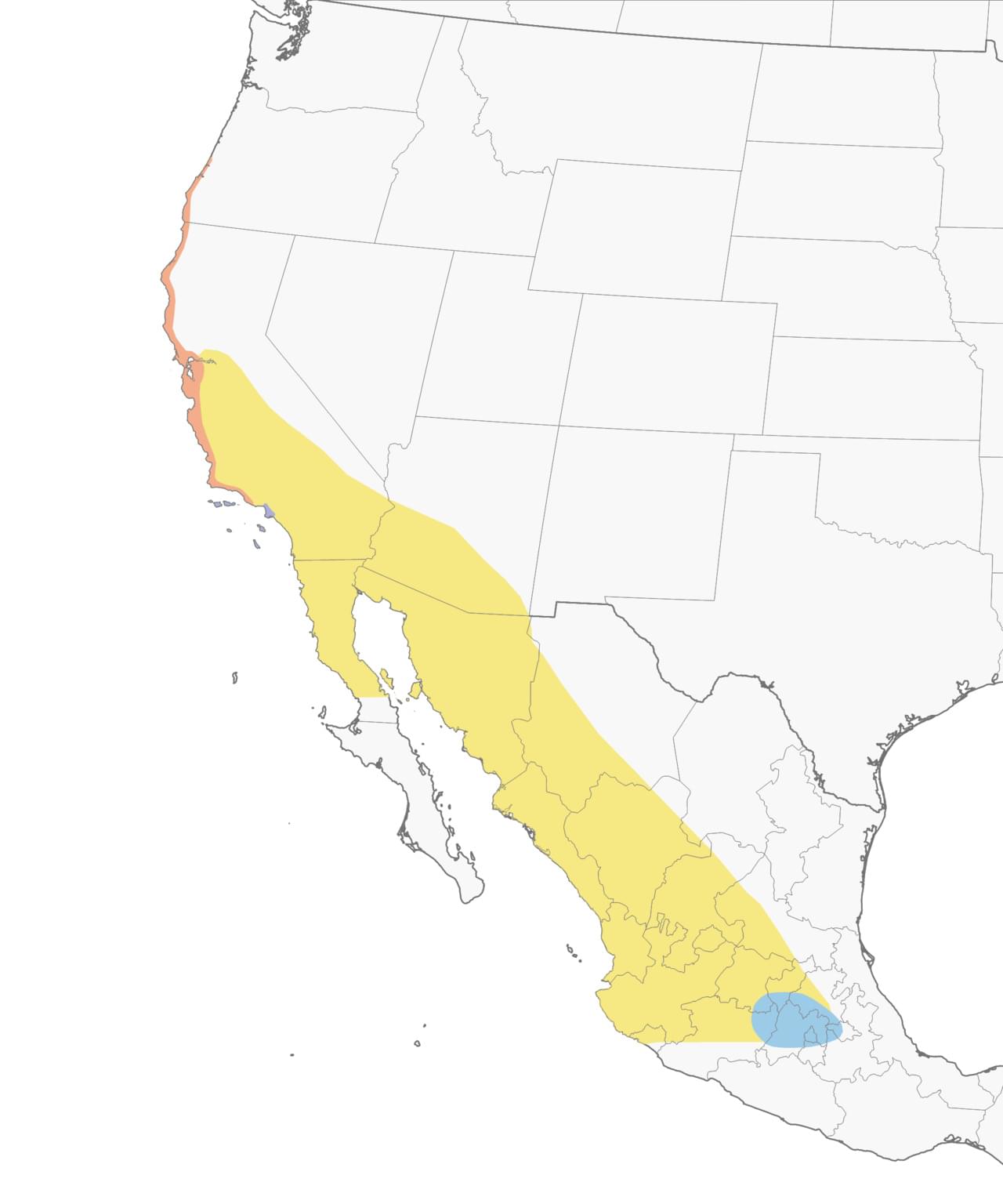
Habitat
Allen's Hummingbirds breed in a narrow strip of coastal forest, scrub, and chaparral from sea level to around 1,000 feet elevation along the West Coast. Males tend to hold territories in more open areas while females nest in areas with tree cover including eucalyptus, redwood, and Douglas-fir. On the wintering grounds in Mexico, they use oak-pine forest, edges, and scrubby clearings with abundant flowers.
Food
Allen's Hummingbirds sip nectar from flowers such as bush monkeyflower, Indian paintbrush, columbine, currant, gooseberry, twinflower, penstemon, ceanothus, sage, eucalyptus, and manzanita. They get their protein by capturing small insects in midair or picking them off plants.
Behavior
Allen's Hummingbirds sip nectar, take small insects in midair, and pick small spiders off vegetation. Males and females defend feeding territories on both the breeding and wintering grounds, chasing away any hummingbird that dares to feed at its nectar sources, though they are not as aggressive as Rufous Hummingbirds. During the breeding season, males also defend patches of coastal scrub with prominent perches where they perform their courtship displays. These elaborate flights are mainly aimed at enticing females to mate, but sometimes displays are used to threaten other species. They have two main displays: a side-to-side shuttle and a pendulum. In the shuttle, they fly short distances side to side in front of a female with their gorget flared out while trilling their wings. In the pendulum display, males zip back and forth in wide arcs producing a stuttering bumblebee-like sound. After the pendulum display, males fly up to 100 feet into the air. On their return they emit a sharp trill with their tail, pulling out of the dive right in front of the female. After the dive they swoop back into the pendulum display followed by another dive. Males perform these elaborate displays for multiple females, but that's their only contribution to parenting. Males mate with more than one female and leave them to raise the young on their own.
Nesting
Female Allen's Hummingbirds gather spiderweb and downy material from willows and flowers in the sunflower family to form the base and inner part of the nest. She sticks the downy fibers together with spiderwebs and uses her body to shape the inside of the cup. She weaves small pieces of grass and leaves to form a thin outer layer and camouflages the outside with pieces of lichen and moss. It takes her 7–13 days to build a nest that is about 1.25 inches across on the inside. Females frequently build new nests on top of old ones or steal material from old nests to build a new one in a different location.
Appearance

Typical Sound
© Thomas G. Sander / Macaulay Library
Adult Description
- Tiny bird, small and compact hummingbird.
- Extensive rusty in most plumages.
- Male with iridescent red throat and shiny green back.
Male Description
Gorget (throat) iridescent scarlet. Gorget with elongated feathers projecting slightly to the sides. Top of head and back dull metallic bronze or bronze-green. Sides of face, sides of chest, and flanks plain cinnamon-rufous. Tail feathers pointed, and colored orange with dark tips. Outermost tail feather very narrow. Wings dusky. Chest white. Belly and undertail coverts buffy. White spot behind black eye. Legs and feet dusky. Occasional individuals have orange in rump.
Female Description
Chin, throat, and chest dull white. Center of throat with variably sized patch of red feathers. Sides and flanks cinnamon-rufous. Back metallic bronze-green, head slightly duller. Wings dusky. Outermost three pairs of tail feathers orange at bases, black in the middle, and white on the tips. Middle pair of tail feathers bronze-green, dusky at tips, with orange edges to green base. Next pair out with rufous base, then bronze-green, and black tips. Undertail coverts pale cinnamon.
Immature Description
Immature similar to adult female, but has less spotting on throat and less rufous on flanks; male more rusty in the base of the tail.
Plumage Photos
Similar Species
Rufous Hummingbirds are so similar to Allen's Hummingbirds that females and immatures are nearly indistinguishable in the field. Male Rufous Hummingbirds usually have an orange back and rump, but beware that some have a green back, like Allen’s. If you can, get a good look at the spread tail; the first outermost tail feathers are broad in Rufous Hummingbirds but narrow on Allen's Hummingbirds. Female Broad-tailed Hummingbirds are slightly larger than Allen's Hummingbirds with a longer and broader tail. They also have less coppery coloring in the tail than Rufous Hummingbirds. Female Calliope Hummingbirds are smaller than Allen's Hummingbirds and their wingtips barely extend beyond the tail when perched. Female Calliopes also have a paler peachy wash on their sides than female Allen's.
- Breeding male and female Allen's Hummingbirds have different habitat preferences. The male sets up a territory overseeing open areas of coastal scrub vegetation or riparian shrubs, where he often perches conspicuously on exposed leafless branches. The female selects nest sites in more densely vegetated areas and forests.
- Two subspecies of Allen's Hummingbirds are recognized. They differ only slightly in appearance, but sedentarius of very southern California is nonmigratory, and the more northerly breeding, slightly smaller sasin spends the winter in Mexico.
- The Allen's Hummingbird is remarkably early migrant compared with most North American birds. Northbound birds may depart on spring migration as early as December and arrive on the summer breeding grounds as early as January. Adult males may begin their southward fall migration in mid-May and arrive on winter grounds as early as August.
